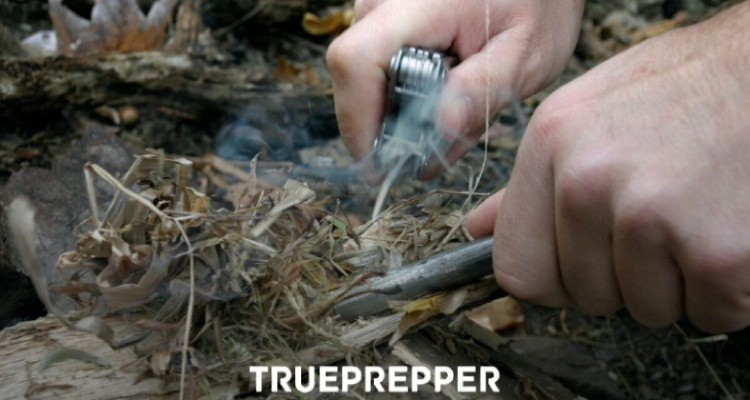Ferro rods let you start fires easily in a wide range of conditions. Ferrocerium rods have been around for a while and have grown into a wilderness survival staple. They can generate thousands of sparks, making them superior to lighters and matches when it comes to simplicity and longevity. The bad news is that there are tons of ferro rod brands and models to choose from.

This is where we come in. We’ve researched the best ferro rods, tested them, and now the results are in: the overall best, an everyday carry option, and an upgrade option. If you need to send some sparks, one of our suggestions will light your fire.
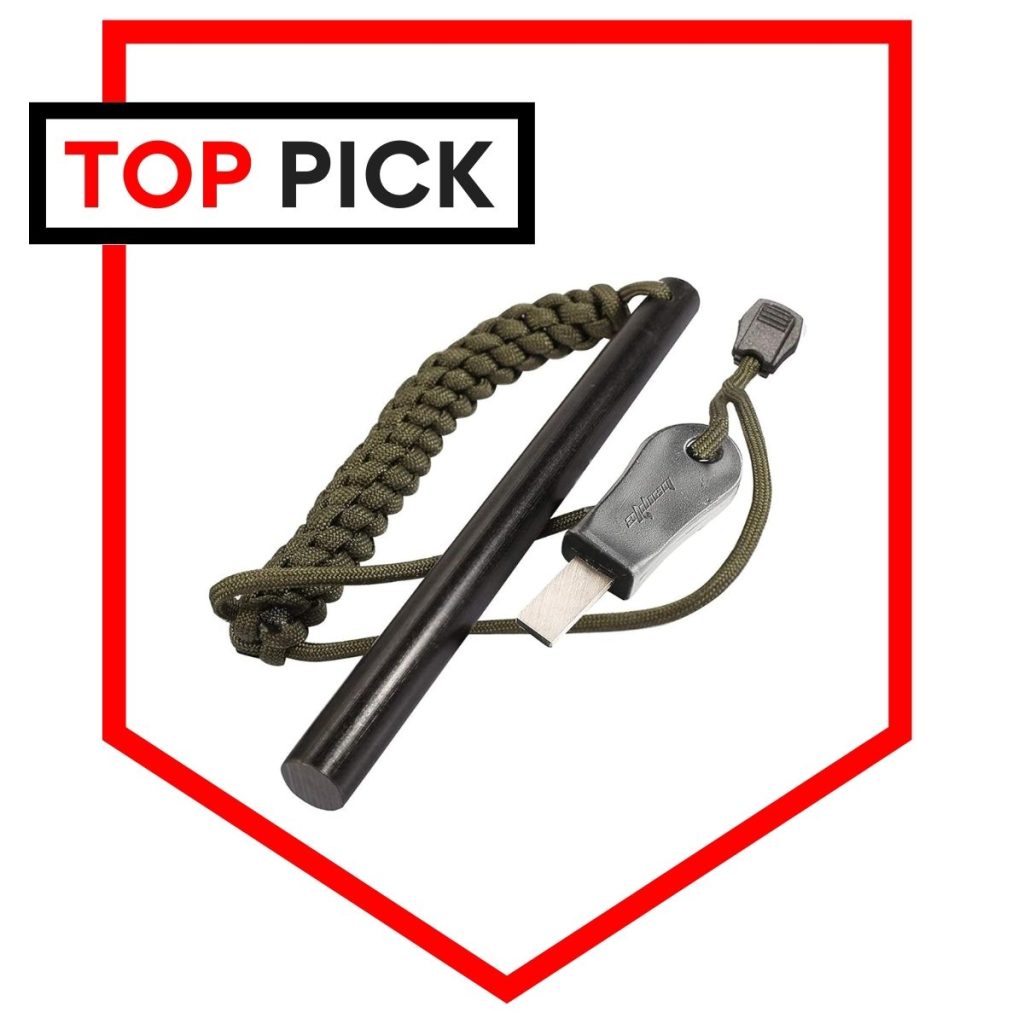
Bayite has been pumping out some solid fire starters, and this modest one takes the top spot in our roundup. It packs a lot of fire strikes into a small package with not much cost or weight. This makes it an excellent choice for bug out bags and other mobile survival kits.
Here’s the stats:
- 1/2″ wide, 6″ long
- 12,000 strike life
- Paracord lanyard (5′ braided)
- Striker w/ grip
- 5.3 ounces
If you’re looking for a simple and effective solution, this Bayite 6″ Ferro Rod is the one you should trust.
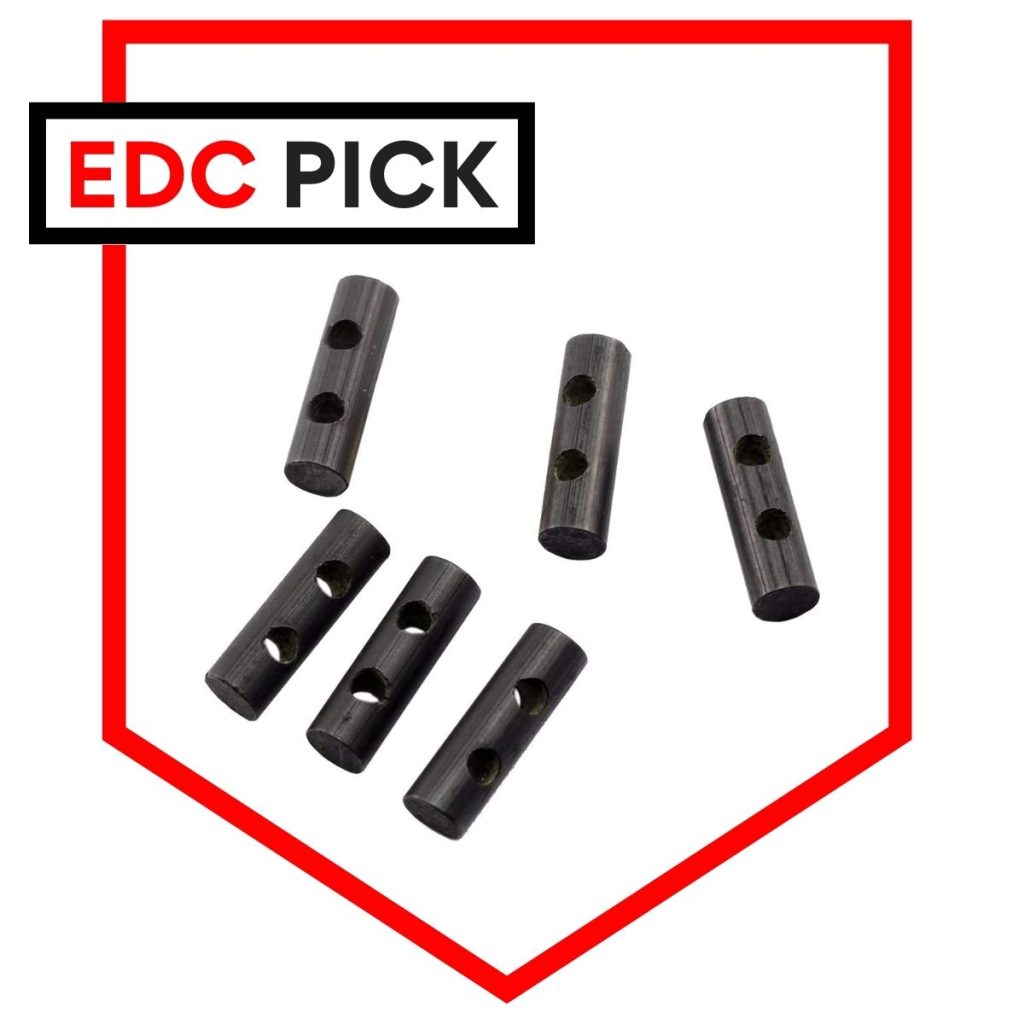
Toggle-hole ferro rods are an awesome way to upgrade any equipment, pack, or clothing with drawstrings. These things thread onto anything with a string, or you could make a lanyard for them with paracord yourself.
They let you take the power of hot ferro sparks wherever you want. You can even thread them on the laces of your boots. Let your imagination run wild with them and let every kit have a ferro rod!
Here is how these little buddies measure up:
- 6-pack
- 5/16″ wide, 1″ long
- 4mm drilled lanyard holes
- 0.5 ounces (each)
Grab one of our most-suggested versatile survival picks period with the Bayite Toggle Hole Ferro Rods.
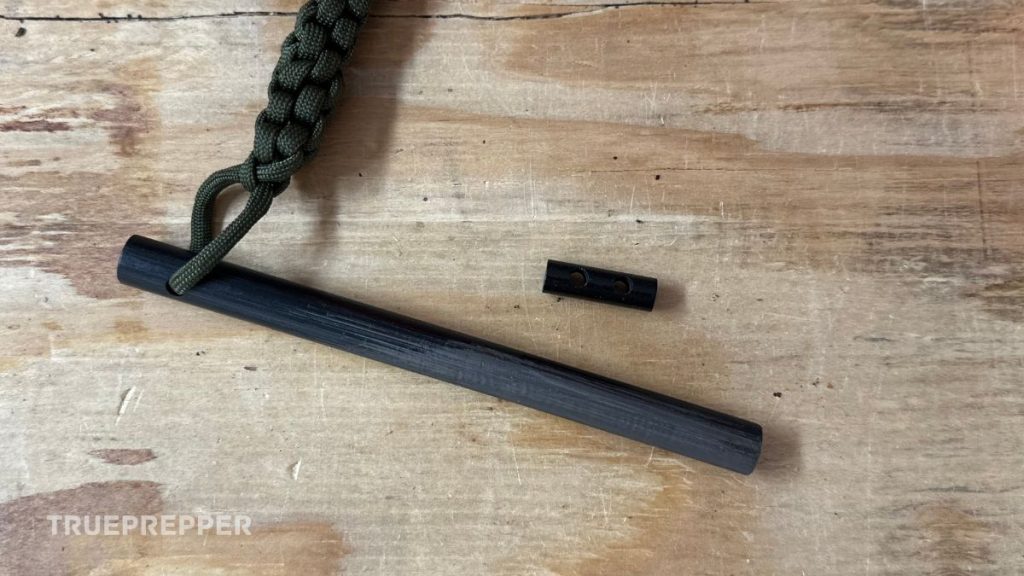
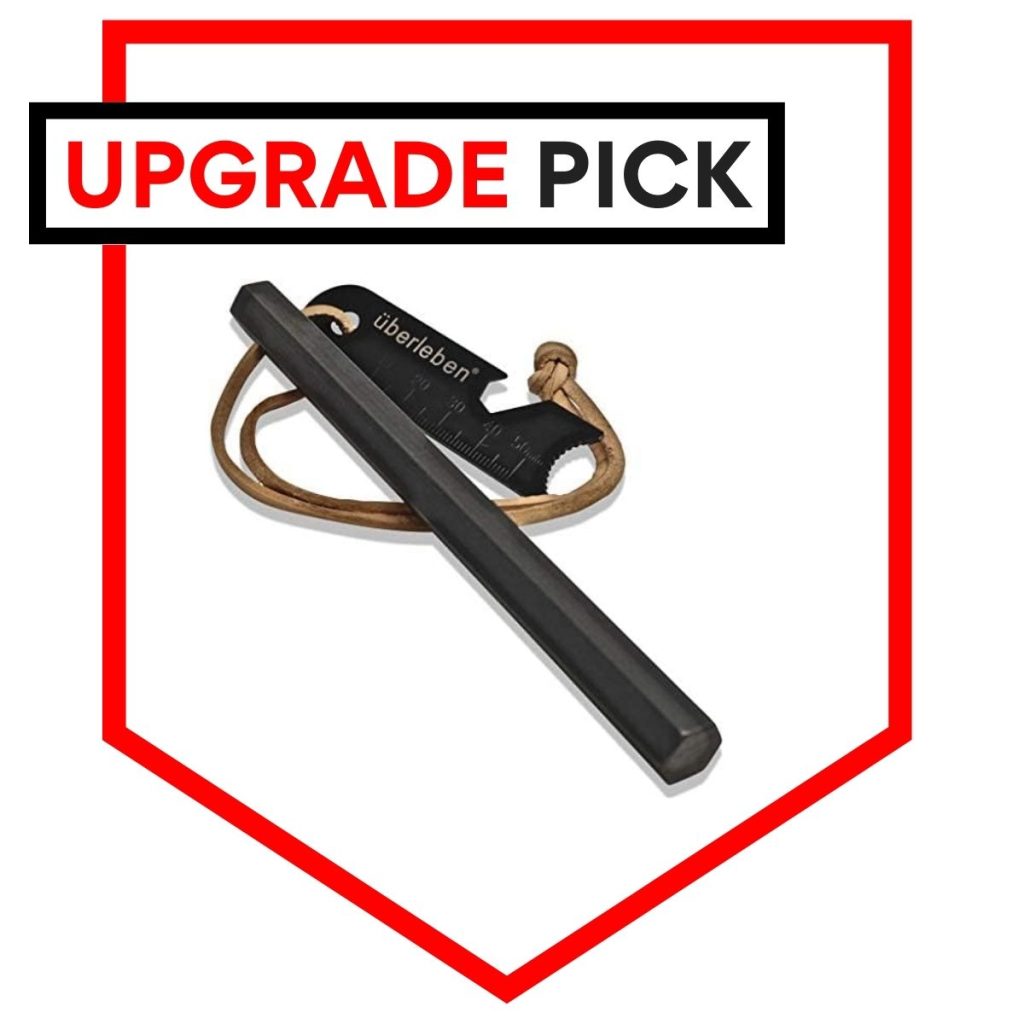
Überleben has been changing the game when it comes to fire starters, providing consistently higher-quality products. Don’t let their Scandinavian-sounding name fool you- they are based here in the USA (Idaho).
They have brought some ingenuity to the Hexå design, with an octagon-shaped rod instead of a traditional cylinder shape. This increases the strike surface area and we found that this significantly increases the spark output.
Here is how it measures up:
- 1/2″ wide, 6.5″ long
- 20,000 strike life
- Unique hexagonal shape (5/16″ flat surface)
- Leather lanyard
- Multi-tool striker
- 4.2 ounces
If you are looking for the best fire starter, look no further than the full-size Überleben Hexå Ferro Rod.
What, Exactly, is a Ferrocerium Rod?
Ferrocerium is a synthetic alloy invented by a German scientist in 1903. A ferrocerium (abbreviated: ferro) rod is a synthetic alloy simply formed in a tube shape with one main purpose: to make sparks.
And really hot sparks at that. Striking a ferro rod with a dense material produces sparks up to 6000 degrees Fahrenheit.
The heat of the sparks is one element that sets ferro rods apart from traditional flint-and-steel. Ferro rods are also much easier to pull sparks off of. You can strike it with many dense materials including:
- Steel (the spine of a fixed-blade knife is most common)
- Flint
- Glass
Ferrocerium rods give us an elegantly simple solution for creating fire in tough environments.
Militaries around the world have used ferro rods in survival kits, and you will find a ferro rod in almost any prepper or survivalist kits as one of their fire solutions.
The alloy, ferrocerium, can be tough to pronounce and spell if you are not familiar with it. You may hear some of these used by accident in place of ‘ferro rod’:
- ferrell rod
- feral rod
- pharoah rod
Carl Auer von Welsbach, the inventor of ferrocerium, was German and named it accordingly.
How to Use a Ferro Rod
A ferro rod is a far cry from a multitool, so it is pretty straightforward to use. It has one purpose. If you are getting the ferro rod out, you are looking to start a fire. If you need a refresher on fire-starting in general, we have you covered with our fire-starting guide.
Ferro rods produce very hot sparks, so use common sense safety and supervise children.
The simplified steps include:
- Gather and group your tinder
- Hold the ferro rod with the far end under or against the pile of tinder
- Drag your striker down the length of the rod while holding it at a 45-degree angle
- Bright, hot sparks will rain down from the rod into the tinder
- Check the tinder pile for smoke, if there is no smoke, repeat steps 2-4
- With smoke curling up from the tinder, blow gently to stoke the ember
- Once the tinder ignites into flame, place it into a campfire and give it a fuel load
Don’t get down if you have some trouble: persistence and practice are key.
It is also good to know that most ferro rods come with a black protective coating on the rod that must be scraped off to expose the alloy underneath.
Dan does the best job of demonstrating how to use a ferro rod and gives some great practical tips:
Who Needs a Ferro Rod?
Ferro rods have a place in many different types of survival and emergency kits. We don’t necessarily consider them essential for any type of survival kit though, since they are typically a long-term backup to lighters and matches.
Some kits that we strongly suggest you include them in are:
Depending on your other gear, you may also want to consider ferro rods for:
This last bullet point has some exciting options, as we pointed out earlier with our portable pick.
The Best Ferro Rod Scraper
Scrapers that are included with a ferro rod kit can do the job. As we discussed before, though, there are plenty of scrapers that could do the job: including glass. We’re not interested in just getting it done, we are more interested in always getting it done and providing extra versatility. That is why we look for:
- Functionality
- Durability
- Versatility
Not just for ferro rod scrapers and strikers, but all of the gear we review and put in our own kits.
Most people use one of four things to scrape and strike their ferro rods:
- Knife Spine
- Ferro Rod Scraper
- Hacksaw Blade
- Knife Sharpener
Sometimes, a knife spine will not work or will be more difficult to use based on the blade material and spine shape. Carbide steel blades with a sharp 90-degree spine work much better than a composite blade with a rounded spine. If you have a fixed-blade knife setup that is very durable, you could save some weight by using your knife instead of a dedicated scraper.
Ferro rod scrapers usually work very well but provide limited versatility otherwise. If you are using a scraper, try to be sure that it can be used for other applications, like a backup cutting tool or even as a reflector.
Hacksaw blades work great and are about as versatile as you can get with these strikers. These work especially well with ferro rods stored in kits and bags rather than EDC. Hacksaw blades are a necessary inclusion in most of these kits and striking a ferro rod with one is just one more way they provide versatility.
If you carry a carbide knife sharpener anyways, you may not need a ferro rod scraper. Sharpeners are known to give off a good shower of sparks if you strike one against a ferro rod.
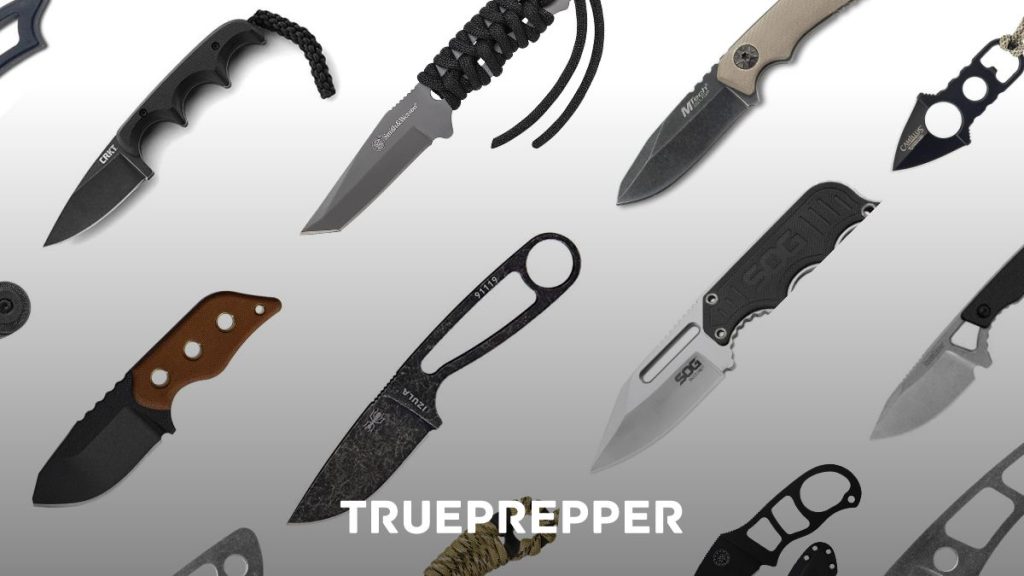
Neck knife splines are popular ferro rod scrapers.
The Best Tinder For a Ferro Rod
Even though a good ferro rod will light just about anything flammable with its superheated sparks, tinder still should be a consideration. Luckily, you don’t have to be too picky.
Dry grass and moss always work well to form a bird’s nest, but keeping some tinder with you is a no-brainer. Sometimes we don’t have the luxury to go picking around the woods or foraging for strips of paper to get a fire started.
Fuel tabs are small and keep a flame lit long and hot. They are definitely our preference, and when combined with a ferro rod, give you a really reliable fire-starting method. Feathered fatwood and charcloth both work well too.
Like we said, though… a ferro rod will light just about any tinder; these just happen to be the best for portability, reliability, and storage.
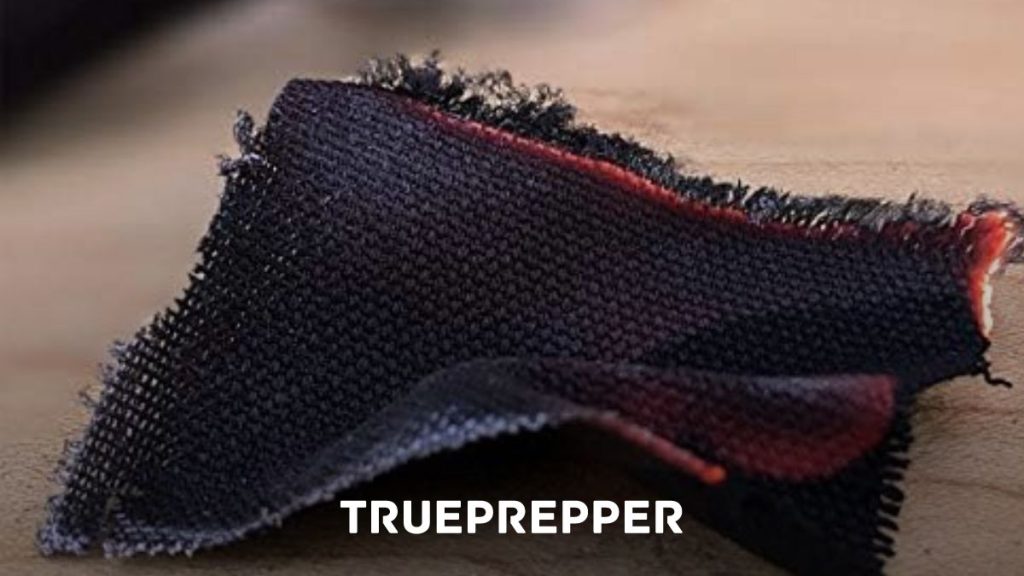
Char cloth lights quickly, plus it is lightweight with plenty of surface area to catch sparks.
DIY Ferro Rod Handles
If you are good with your hands and looking to take on an easy project, a DIY Ferro Rod is a great way to add some personality to your survival gear. To make a custom handle you will just need a few materials:
- Ferro rod
- Drill bit the same diameter as the ferro rod
- Drillable handle material (wood, plastic, bone, etc.)
- Super glue
- Drill
The steps:
- Tape your drill bit to the length you would like to recess the rod into the handle material. Shoot for 1/3 of the total rod length (at least a half inch) to prevent any rod wobble.
- Drill out the center of the handle material to depth. Using a vice can help.
- Drop some glue into the new hole and smear just a little onto the ferro rod where it will be recessed.
- Jam the ferro rod into the handle hole and let the glue dry.
- Once the handle and rod are dry, give the rod a tug to be sure it is secure.
- Let the sparks fly.
Modifying survival equipment is one great way to get hands-on and familiar with it. Do not just stick your gear in a bag or kit and forget about it. Practice with it. Take it apart and put it back together. Familiarize yourself with your gear and it will pay off in the end.

source : Sean Gold

